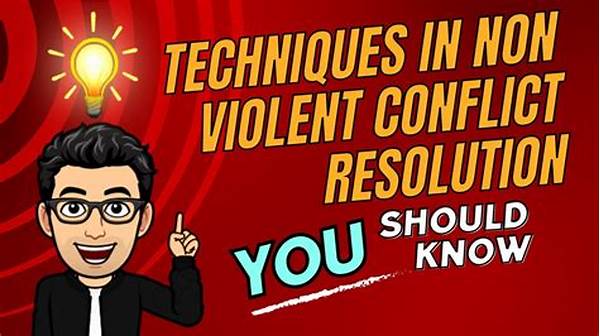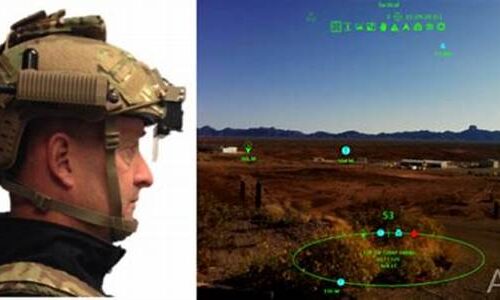In the complex tapestry of human interaction, disputes invariably arise, necessitating effective mechanisms for resolution. Non-violent dispute resolution techniques stand as pivotal approaches in mitigating conflicts without resorting to aggression or harm. These techniques prioritize empathetic communication, mutual understanding, and cooperation, fostering sustainable peace and agreement in various contexts, from interpersonal conflicts to international negotiations.
The Importance of Non-Violent Dispute Resolution Techniques
In contemporary society, non-violent dispute resolution techniques assume critical importance. These methods promote constructive dialogue, allowing parties to express grievances while actively listening to opposing perspectives. Through such engagement, individuals cultivate empathy, which is instrumental in understanding the root causes of conflicts. By employing non-violent dispute resolution techniques, parties involved can collaboratively craft solutions that are equitable and considerate of all viewpoints. This approach not only defuses immediate tension but also lays the foundation for healthier long-term relationships, preventing the recurrence of similar disputes. Furthermore, non-violent techniques can contribute to societal harmony by modeling conflict resolution practices that eschew violence, fostering a culture of peace and respect.
Techniques of Non-Violent Dispute Resolution
1. Mediation: This process involves a neutral third-party facilitating communication between disputing parties, helping them reach a mutually agreeable solution.
2. Negotiation: Through negotiation, involved parties engage in direct dialogue to collaboratively explore solutions that satisfy the interests of all stakeholders.
3. Arbitration: In arbitration, an impartial arbitrator reviews the conflicting positions and renders a decision that is binding on both parties, ensuring resolution without physical confrontation.
4. Facilitation: This technique involves guiding a group discussion to promote understanding and agreement among all parties, fostering a cooperative environment.
5. Collaborative Law: This legal approach prioritizes cooperation and problem-solving over adversarial tactics, aiming to reach a settlement that respects all parties’ interests.
Benefits of Implementing Non-Violent Dispute Resolution Techniques
Implementing non-violent dispute resolution techniques yields significant benefits. Firstly, these techniques safeguard relationships by nurturing an environment of respect and understanding, which is crucial for maintaining long-term cooperation. Secondly, they empower individuals by involving them actively in the resolution process, granting them agency and control over the outcomes. Furthermore, by minimizing hostility and aggression, non-violent techniques reduce emotional distress and psychological harm among participants. Additionally, these methods are often time and cost-effective, eliminating the need for protracted legal proceedings. Importantly, the skills developed through practice, such as active listening and empathy, transcend specific conflicts, contributing to personal and professional growth.
Challenges in Adopting Non-Violent Dispute Resolution Techniques
Despite their numerous advantages, there exist challenges in the adoption of non-violent dispute resolution techniques. One major obstacle is the ingrained societal preference for adversarial methods, particularly in legal frameworks that emphasize winning over reconciliation. Furthermore, deeply entrenched power imbalances can hinder the effectiveness of non-violent approaches, as dominant parties may resist equitable solutions. Another challenge is the potential lack of awareness or training in these techniques, leading to their underutilization in both personal and institutional contexts. Overcoming these challenges necessitates continuous education and advocacy, emphasizing the tangible benefits of peaceful conflict resolution.
Integrating Non-Violent Dispute Resolution Techniques in Various Contexts
The integration of non-violent dispute resolution techniques is vital across different sectors. In educational settings, teaching these methods can equip students with essential life skills, fostering environments conducive to learning and cooperation. In the workplace, these techniques can effectively manage interpersonal and organizational conflicts, enhancing productivity and morale. On a larger scale, governmental and international bodies can employ non-violent strategies to address geopolitical disputes, averting violence and achieving diplomatic solutions. Thus, the application of these techniques is broad and adaptable, serving diverse societal needs.
Training for Non-Violent Dispute Resolution Techniques
To maximize the efficacy of non-violent dispute resolution techniques, comprehensive training programs are essential. Such programs should focus on developing core skills like active listening, empathy, and negotiation. Participants must be trained to identify underlying issues and collaborate on innovative solutions. Moreover, training should address cultural sensitivities, ensuring approaches are inclusive and adaptable to diverse populations. By equipping individuals with these competencies, societies can cultivate a culture predisposed to resolve conflicts peacefully, enhancing social cohesion and stability.
Conclusion
In conclusion, non-violent dispute resolution techniques serve as essential tools for fostering harmony and understanding across various domains of human interaction. By prioritizing empathy, cooperation, and open communication, these approaches offer effective means to address conflicts without recourse to violence. They provide sustainable solutions that respect the interests of all parties involved, paving the way for lasting peace and cooperation. Despite the challenges posed by traditional adversarial methods and societal norms, the benefits of adopting non-violent strategies are manifold, contributing significantly to personal, communal, and global well-being. As we continue to navigate an increasingly interconnected world, the widespread adoption of non-violent dispute resolution techniques remains imperative in promoting a culture of peace.





